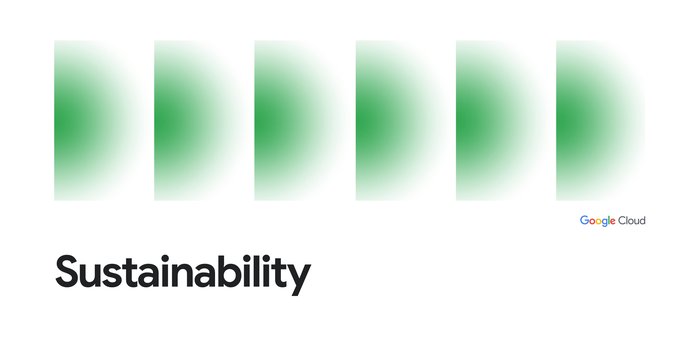Responsible water use: Assessing watershed health in data center communities
Ben Townsend
Global Head of Data Center Sustainability
There’s more demand than ever for the digital products and services that people and businesses rely on every day. Greater digital demand in turn requires greater data center capacity, and here at Google we’re committed to finding sustainable ways to deliver that capacity.
Today, we’re sharing our new framework to more precisely evaluate the health of a local community’s watershed and establish a data-driven approach to advancing responsible water use in our data centers. Building on our climate-conscious approach to data center cooling, the framework is an important element of our commitment to water stewardship in the communities where we operate.
When we build a data center, we consider a variety of factors, including proximity to customers or users, the presence of a community that’s excited to work with us, and the availability of natural resources that align with our sustainability and climate goals. Water cooling is generally more energy-efficient than air cooling, but with every campus, we ask an important question: Is it environmentally responsible to use water to cool our data center?
To find the answer in the past, we used publicly available tools to gain high-level insights, or provide an “Earth View” of the water challenges facing large aquifers or river basins, such as the Columbia River in the Pacific Northwest, or the Rhine River in northern Europe. But when we wanted to get more of a local “street view'' and dive deeper into the state of a specific water source — like the Dog River in Oregon, or the Eems Canal in Groningen, Netherlands — we struggled to find a tool that sufficiently captured the local water challenges to inform us about how to cool the data center in a climate-conscious way.
We recognize that addressing global water challenges requires local solutions, so we developed a data-driven water risk framework in collaboration with a team of industry-leading environmental scientists, hydrologists, and water sustainability experts.
Behind the scenes of our water risk framework
Our framework provides an actionable and repeatable decision-making process for new data centers and helps us evaluate evolving water risks at existing sites, with the specificity we need to understand watershed health at a hyperlocal level. The evaluation results tell us if a watershed’s risk level is high enough that we should consider alternative solutions like reclaimed water or air-cooling technology, which uses minimal water but consumes more energy.
The framework has two main steps to assess the water risk level for a data center location:
- Evaluate responsible use. We compare the current and future demand for water — from both the community and our potential data center — to the available supply, using data from the local utility and water district management plans. In this evaluation, we also consider the recent water-level history compared to levels expected of a healthy watershed using flowstream and groundwater monitoring data, as well as whether the local water authority has rationed water use. Based on these indicators, our watershed health experts determine if a water source is considered at high risk of scarcity or depletion. If it’s high risk, we will pursue alternative sources or cooling solutions at the data center campus.
- Measure composite risk. We look at the feasibility of treating and delivering water to and from the data center, whether with existing infrastructure or by collaborating with a utility partner to build new solutions such as reclaimed wastewater or an industrial water solution. In addition, we assess community access to water, regulatory risk, local sentiment, and any climate trends that could affect the future water supply, such as reduced precipitation or increased drought.
We designed this framework to take a comprehensive look at the water-related risks for each potential data center location. The results provide context for locally relevant watershed challenges and how our own investments in improved or expanded infrastructure or replenishment projects can help support local watershed health. Given the dynamic nature of water resources, we will repeat these assessments across our portfolio every three to five years to identify new and ongoing risks at existing sites that may require mitigation.
Responsible use in action
We have integrated the water risk framework into our planning and development processes for all new data center locations.
Notably, the responsible-use evaluation completed during the planning stage for our recently announced data center in Mesa, Arizona, found the local water source was at high risk of depletion and scarcity. Therefore, we opted to air-cool the data center, minimizing our impact on the local watershed. To further support water security in the area, we also donated to Salt River Project’s (SRP) effort focused on watershed restoration and wildfire risk. This collaboration with SRP was a follow-up to our 2021 investment in the Colorado River Indian Tribes system conservation and canal-lining projects to improve water conservation in the Southwest.
Moving forward
Collective effort and transparency are necessary to keep global watersheds thriving and healthy, as we work to deliver products and services that people and businesses use every day. We want to share what we’ve learned through our work with climate-conscious cooling and provide an example for how other industrial water users can make responsible water decisions for their own operations.
Our water risk framework is one of many pieces of responsible water use in action. Implementing this framework is another step on our water stewardship journey and complements our ambitious 24/7 carbon-free energy goal. Watershed health is both complex and dynamic, and as we make progress on our framework, we will continue to refine it, sharing lessons learned with others who aspire to practice responsible water use in their own organizations and communities. Check out our water risk framework white paper for more detail.



